Coexistence with nature (biodiversity)
Contents
- Ⅰ. Towards the realization of a society in harmony with nature
- Ⅱ. Biodiversity action guidelines
- Ⅲ. Takenaka Technical Research & Development Institute's SHI-RA-BE Forest initiative
-
Ⅳ. Takenaka Training Center Seiwadai Forest initiatives
- 1. Reasons for the Takenaka Group's commitment to biodiversity conservation
- 2. Seiwadai Forest Activities Contribute to SDG Achievement: Human resources development for the conservation and enhancement of biodiversity
- 3. Mori-zukuri (forestation) activity commencement
- 4. Changing the mindset of employees with Seiwadai Forest training
- 5. From mori-zukuri (forestation) to hito-zukuri (people development)
- Ⅴ. Biodiversity initiatives in our projects
I. Towards the realization of a society in harmony with nature
“Living in harmony with Nature” has been positioned at the beginning of Vision 2050 for the global goals of the Kunming-Montreal Global Biodiversity Framework as well as the National Biodiversity Strategy of Japan 2023-2030. In order to achieve this, Biodiversity Conservation and Restoration (Nature Positive) was added to the Kunming-Montreal mission as a short-term goal (2030 Mission). Conserving rich biodiversity and realizing a society in harmony with nature that can enjoy its blessings in the future is an important social issue, both for realizing a sustainable society and for making our business sustainable. Capitalizing on our deep knowledge and problem-solving capabilities related to the conservation and restoration of biodiversity, Takenaka Corporation is committed to realizing a society in harmony with nature that can enjoy its blessings into the future.

II. Biodiversity action guidelines
In our Environmental Concept Book, which was published in 2021, Takenaka Corporation has established targets for 2023 by embracing the realization of a society in harmony with nature as one of the perspectives of a long-term road map to reach the society we aspire to in 2050, and then by performing back casting from 2050. We also assume that new social systems and technological innovations will be required to achieve these goals. Our road map focuses on green infrastructure as an important technological approach to achieving a society in harmony with nature, and we will present our efforts in the following chapters.
In order to take specific action on biodiversity, we established Biodiversity Action Guidelines in 2012, and then launched a variety of initiatives.
-
1.Awareness and sharing)
Recognize the relationship between business and biodiversity, and share this inside the company. -
2.Environmental management
Position biodiversity as a major objective for environmental management and ensure implementation. -
3.Research and development
Accumulate knowledge on biodiversity, and promote related research and technological development. -
4.Construction activities
In planning and design, actively propose plans that give consideration to biodiversity. In procurement of materials and services, promote conservation of biodiversity with partner companies. In construction, avoid or reduce the impact on biodiversity from the construction planning stage. -
5.Takenaka facilities
Promote land use, operation, and management of our own facilities that give consideration to biodiversity. -
6.Education and awareness
Promote education and raise awareness of biodiversity for executives and employees of group companies as well as at partner companies. -
7.Collaboration and Cooperation
Collaborate and cooperate with stakeholders to promote biodiversity.
1. Green Infrastructure Concept Book
In 2021, we published a Green Infrastructure Concept Book to promote the development of unique green infrastructure solutions that address complex, diverse issues with versatile solution capabilities.

2. Consideration for biodiversity
The benefits of biodiversity (ecosystem services) comprise a form of “natural capital” at the foundation of sustainable economies and societies. In order to realize a society where people and nature coexist in harmony, we will promote urban development that introduces green infrastructure to make use of the diverse functions of nature for multiple purposes with the aim of improving biodiversity.
(Environment) A city that coexists with nature while minimizing environmental impacts
(Economy) An appealing city that attracts human resources
(Society) A city where all residents can live comfortably and participate socially
(Disaster prevention and mitigation) A safe, secure, disaster-resilient city
(Health) A city where people can enjoy physical and mental health, as well as peace of mind

III. Takenaka Technical Research & Development Institute's SHI-RA-BE Forest initiative
1. About SHI-RA-BE Forest
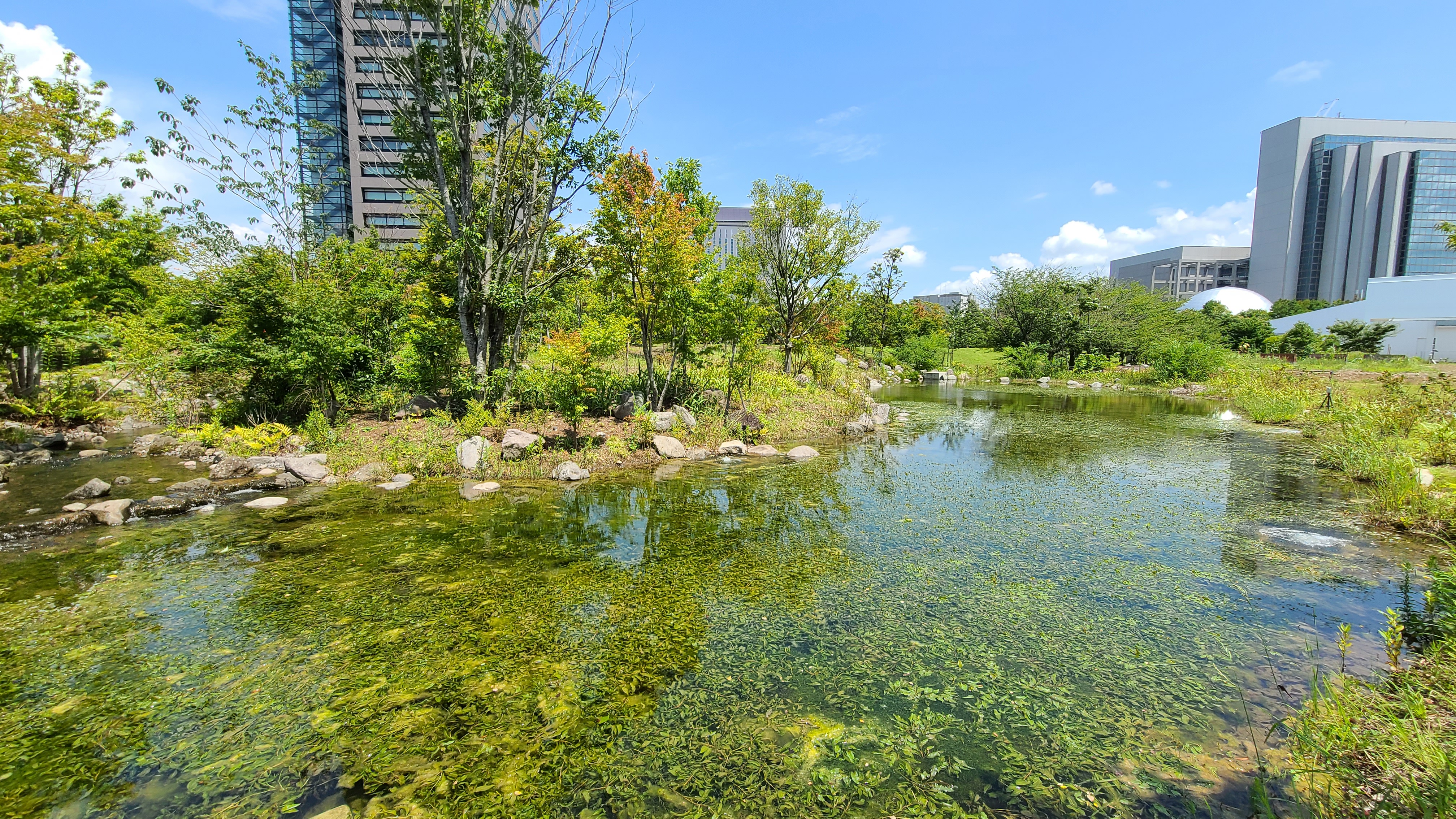
SHI-RA-BE Forest is a research and demonstration field for biodiversity conservation and green infrastructure, located at the Takenaka Technical Research & Development Institute in the city of Inzai, Chiba Prefecture, Japan.
The field is located in Chiba’s Hokuso region, where the original landscape remains intact. It includes Nomadote, a wooded landscape dominated by the goldenrod flowering plant, and a grassland that has been passed down from generation to generation. These are referenced and utilized in developing fields.
By carefully planning green spaces based on ecological principles referenced to the natural regional landscape, we are creating multifunctional green spaces that wisely draw on the power of nature to resolve multifarious problems and contribute to urban resilience, QOL (quality of life) and the restoration of biodiversity.
2. Natural symbiosis site and obtaining SITES certification
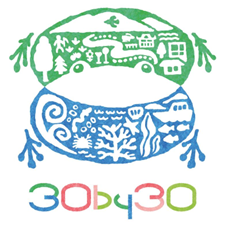
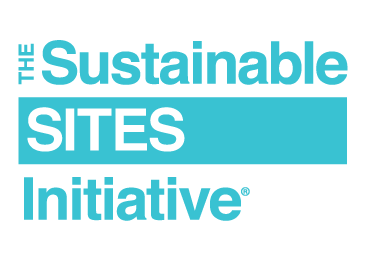
Takenaka Corporation is a participant in the 30 by 30 Alliance for Biodiversity program launched by the Ministry of the Environment, and we have obtained certification as a site for Coexistence with Nature for SHI-RA-BE Forest in 2023.
The 30 by 30 Alliance for Biodiversity is a system under which the Ministry of the Environment certifies “areas where biodiversity is being conserved through the efforts of the private sector and others” This initiative was launched in FY2023 to achieve the “30 by 30” goal of conserving 30 percent of Japan's land area by 2030.
In addition, SHI-RA-BE Forest has received Gold certification from the Sustainable SITES Initiative (SITES), a global outdoor environment certification system that originated in the United States. SITES, like LEED, is a certification system operated by Green Business Certification Inc. (GBCI), a U.S. organization that serves as a quantitative guideline for implementing green infrastructure to comprehensively assess outdoor environment sustainability, including biodiversity. By deploying the knowledge gained from these certifications, we will contribute to biodiversity conservation.
3. Technologies applicable to SHI-RA-BE Forest
1. Rainscape (a planting area that makes effective use of rainwater and reduces risk of urban flooding)
Rainscape contributes to biodiversity conservation during normal weather, while allowing for the storage and infiltration of rainwater during heavy rainfall, thereby reducing peak rainwater runoff. It also promotes effective water use and refills groundwater. This decentralized watershed technology allows for rainwater storage and infiltration at individual sites as a countermeasure to heavy rain-induced flooding seen in recent years. A green infrastructure component, it contributes to the restoration of a healthy water cycle and the creation of greenery rich communities. SHI-RA-BE Rainscape increases water storage and infiltration by providing adjacent ecological pond capacity adjustments as well as topography specifications.
During one heavy rainfall event in October 2019 when precipitation totaled some 248mm in just 24 hours, 236 cubic meters of water--equivalent to about 43 percent of the total precipitation in the catchment area--was stored and infiltrated into the Rainscape area alone, thereby reducing the runoff load on the sewer system.

2. Green space planning technology and urban birds: (Green space planning technology that contributes to biodiversity conservation)
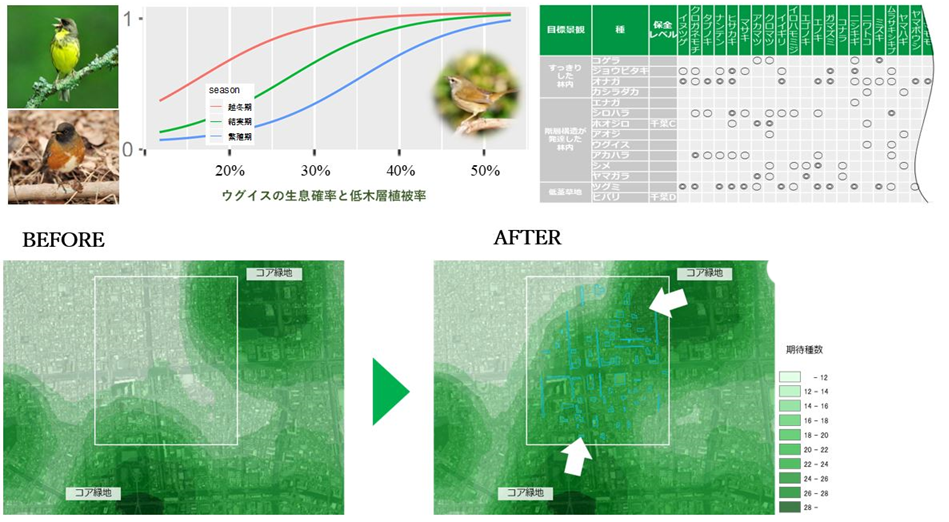
Focusing on birds, which are regarded as indicators of urban biodiversity, we have developed a unique habitat model and a database of preferred tree species based on data gathered from urban green spaces. At SHI-RA-BE Forest, target species that can be attracted to the area are determined by comparing various habitat models with local ecological surveys and acceptable green space conditions. Green spaces that can easily accommodate wild birds are created by planting tree species that bear their preferred fruit and by creating streams with water depths suitable for bathing. As shown above, we also propose urban-scale green space planning by utilizing potential maps and other materials that evaluate bird diversity, making use of GIS (geographic information system) technology.
3. Seminatural grassland restoration technology

Neighborhood grasslands have significantly decreased due to changes in land use since the 1960s. As a result, many plants unique to grasslands, including the so-called “seven autumnal flowers,” a group into which the Chinese bellflower and the golden lace belong, are in danger of extinction. Many of the grassland butterflies, birds, and mammals which live there are also listed as rare species. Thus, the restoration of seminatural grasslands consisting of native herbaceous species is an important social issue from the perspective of biodiversity conservation. It is also important to the creation of attractive, undeveloped satoyama (local woodland landscape settlements) and fosters community-building through the preservation of fading ecosystems.
SHI-RA-BE collaborates with universities, citizens, and government agencies to study techniques for restoring seminatural grasslands by referencing high degrees of remaining indigenous vegetation in subject areas.
4. Preserving rare aquatic plants outside their habitats
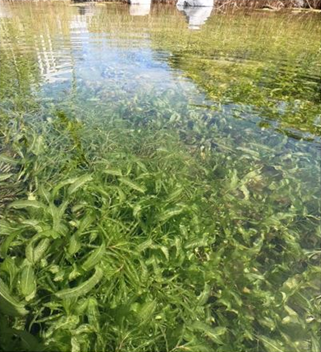
Aquatic plants spawn diverse and complex underwater environments and are home to variety of life, including dragonflies and other aquatic insects. They also help to prevent sediment destruction, thereby creating rich waterside environments. However, due to reclamation operations around lakes and marshes, lakeshore construction, water pollution, and reduced rice paddy management, it is estimated that some 40 percent of Japan’s aquatic plants are on the verge of extinction. In particular, since submerged aquatic plants grow by photosynthesis, using sunlight transmitted through water and by absorbing waterborne nutrients, water quality strongly affects their viability along with the viability of many other endangered species.
In the SHI-RA-BE Forest site at Lake Inbanuma, indigenous water plants such as the Potamogeton dentatus and the Euryale ferox are now endangered, but they are being restored from seeds found at the lake bottom and preserved with clean, high-quality water. By maintaining and preserving indigenous aquatic plants that retain local genetic information, we contribute to the preservation of rare ecosystems and rich regional aquatic environments.
5. Dragonfly habitat creation
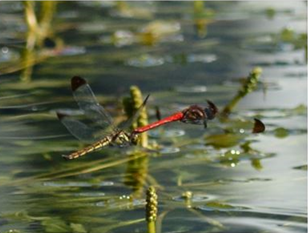
By appropriately planning for and maintaining water plants, water quality and adjacent woodlands, we create ecosystems where dragonflies, which serve as bellwethers for terrestrial and aquatic ecosystems, can thrive.
6. Beekeeping
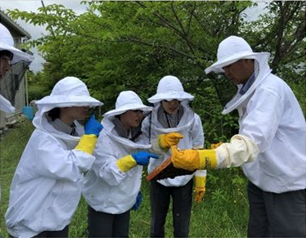
Bees, which serve an important role in pollinating plants, are indispensable to agricultural production and to the maintenance of plant species. At SHI-RA-BE Forest, we aim to realize a society in harmony with nature through beekeeping while focusing on the contribution of urban beekeeping to local ecosystems, to its role in environmental education, and as a communication tool.
7. Evaluating urban agriculture ecosystem services
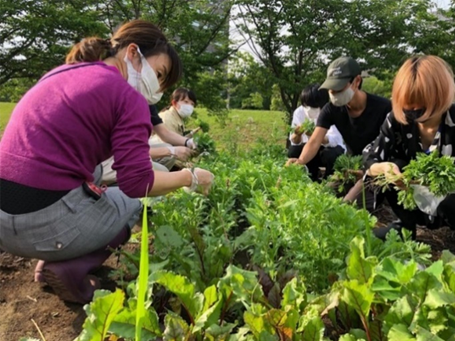
In addition to producing and supplying food, urban agriculture is attracting attention as a means to resolve various social problems in modern cities due to its other various benefits. SHI-RA-BE, with the cooperation of nearby organic farmers, has been accumulating knowledge about organic vegetable gardens and practicing organic vegetable and grape cultivation in order to promote employee health. The multifaceted functions of urban agriculture are confirmed through such activities as growing and harvesting healthy vegetables, serving harvested vegetables in cafeterias, and verifying the effects of urban agriculture on health promotion and community building.
8. IPM (Integrated Pest Management)

At SHI-RA-BE Forest, IPM (Integrated Pest Management) is practiced in land maintenance and management. This involves the minimal use of pesticides, chemical fertilizers, and other chemicals. Stewardship is adaptive, and rooted in monitoring and IPM-based green space management, premised on unplanned consequences, in order to create environments where people and nature can coexist in harmony with the relevant ecosystems.
9. Healthy promenade
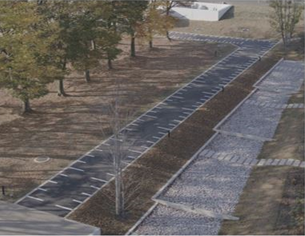
We are demonstrating a promenade (walking trail) that contributes to the health of employees by painting it based on the standard value of stride length that contributes to good daily health.
10. Sotowork Index

Processes affiliated with the promotion of outdoor space use are called sotokomi. These involve the following processes:
・Understanding environmental conditions
・Creating comfortable outdoor environments
・Guiding visitors outdoors
These three processes above are repeated to effectively guide people to use outdoor spaces. The “Sotowork Index” was developed as a technology to support sotokomi.
The Sotowork Index calculates the comfort level of outdoor spaces according to wind speed, solar radiation, temperature and other factors, quantifying it in an easy-to-understand, stepped display. We have developed a system that allows people to understand the outdoor comfort level while indoors, and we are verifying the effectiveness of providing outdoor guidance.
IV. Takenaka Training Center Seiwadai Forest initiatives
1. Reasons for the Takenaka Group's commitment to biodiversity conservation
Currently, the majority of the world's population is concentrated in cities, which depend on the benefits (ecosystem services) provided by biodiversity. Urban socioeconomic activities are believed to be the cause of much of the world's accelerating biodiversity degradation. In order to achieve the 17 Sustainable Development Goals (SDGs) unanimously adopted at the 2015 United Nations Summit, the goals of natural capital, or biodiversity conservation, are common around the world. They form the basis of the UN’s 17 social and economic goals. As an integrated engineering firm for urban creation, the Takenaka Group has been promoting the Takenaka Biodiversity Promotion Program, which embodies Guidelines for Biodiversity Activities, and is consistent with our growth strategy. Through this program, we aim to enhance our ability to resolve social issues, including biodiversity conservation, and contribute to the realization of a sustainable society. This section introduces our Seiwadai Forest activity--our approach to natural capital that supports the UN’s SDGs. This, in turn, is based on the above-mentioned Seiwadai Forest site at the Takenaka Training Center located in Kawanishi City, Hyogo Prefecture in western Japan.
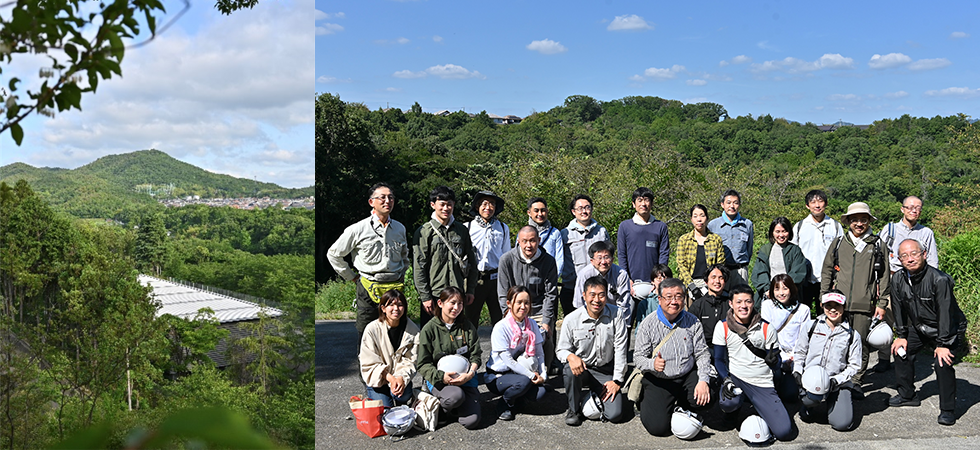
2. Seiwadai Forest Activities Contribute to SDG Achievement: Human resources development for the conservation and enhancement of biodiversity
The Takenaka Group has been an industry pioneer in environmental initiatives. Our efforts began with the motto “Green in Design” (1971), followed by our Environmental Charter (1992), Environmental Policy (2009), Environmental Message, “Connecting people with nature” (2010), and Biodiversity Action Guidelines (2012).
The Seiwadai Forest Project was launched in 2017 as a Takenaka Biodiversity Promotion Program that embodies our environmental policy and Biodiversity Action Guidelines.
Seiwadai Forest creates and implements a model for ecosystem and biodiversity conservation. Through it, we are engaged in the following four activities:
- 1.Employee-led maintenance and conservation activities.
- 2.Hands-on training.
- 3.Research and development and dissemination of environmental technologies.
- 4.Cooperation and collaboration with stakeholders.

3. Mori-zukuri (forestation) activity commencement
To promote these activities, Seiwadai Forest is being converted from an evergreen forest with no sunlight to a bright, biodiverse forest comprised mainly of deciduous trees. To this end, the Museum of Nature and Human Activities, Hyogo has been enlisted as an outside expert. At the start of the activities, the first step was to develop a “field center” and “nature observation paths” to serve as a base. In 2018, we also launched ② Hands-on training programs in order to learn from actual examples of satoyama habitat conservation and utilization.

4. Changing the mindset of employees with Seiwadai Forest training
The Hokusetsu region’s Kurokawa district, where Seiwadai Forest is located, is said to boast the best satoyama in Japan. Charcoal produced using kunugi (sawtooth oak) has been known by the names kikutan (chrysanthemum charcoal) or Ikeda-tan for more than 500 years, and it is valued as a high-grade charcoal used in traditional tea ceremonies. In the Kurokawa area, kunugi trees are culled in 10-year cycles to create a forest mosaic of various ages. The satoyama forests of red pine and konara oak can still be seen today. Learning from Japan's best satoyama, forestation training programs are used to develop the Seiwadai Forest Takenaka Training Center as a way to not only learn green space management techniques, but also to discover and refine skills that can contribute to society and the community. With Takenaka Group employees working together through elementary and intermediate training, the purpose is to develop next-generation leaders who can solve a wide range of social issues through the efforts of unified group employees.
Beginner training
Beginner training starts with a tour of the Kurokawa area. Participants visit a charcoal-making kiln that utilizes kunugi trees harvested from the satoyama. They also listen to a talk by Mr. Imanishi, a charcoal farmer, on producing high-grade kikutan. We realize the importance of continuing long-term care for satoyama in order to receive its bounty. The tour also stops at the Kawanishi Satoyama Club, a citizens' group active at nearby Mt. Myoken, and at the Nose Electric Railway Company, and observe the conservation activities for restoring the edohigan (prunus itosakura) flowering plant, a natural treasure of Kawanishi City. The following day, participants learn about the importance of satoyama management to protect biodiversity and the value of the Seiwadai Forest via a classroom lecture.
Intermediate training
In intermediate level training, participants learn from experts about how to increase biodiversity, the necessity of trimming broad-leaf evergreens and culling trees that block sunlight in order to promote diverse plant growth. The woods are transformed into bright areas with clear visibility in about four hours. At the end of the training, a workshop is held to review the four days of beginner and intermediate level sessions, and discuss sustainability and how to utilize the Seiwadai-no-mori in the future. We are now considering how to develop many of the ideas presented at the workshop into specific measures.

Advanced training
From 2021, we have been nurturing the next generation of leaders to resolve social issues related to biodiversity, targeting graduates of the beginner and intermediate training courses that started in 2018. Largely based on workshop efforts, the program examines solutions from various angles that can actually be used in conserving and enhancing biodiversity. At the COP15 United Nations Biodiversity Conference held in December 2022, biodiversity initiatives were highlighted and became a global trend. Expectations are therefore high for the results of this training program.

5. From mori-zukuri (forestation) to hito-zukuri (people development)
Going forward, we will continue with Activity ②: Hands-on training while bolstering Activity ④: Cooperation and collaboration with stakeholders, and conduct Activity ①: Maintenance and conservation activities led by Takenaka Group employees. This will be linked to Activity ③: Research and development, and environmental technology development.” We will also apply knowledge gained through Seiwadai Forest to architectural works and community development in other areas. Currently, we are zoning Seiwadai Forest for conservation, maintenance, utilization, and developing a scenario for forest creation over the next 20 years. In particular, the vast grounds will be used as a new learning place where people can gather and gain new insights, for example by creating full-scale green space models and nursery plots for growing seedlings. We also expect that new business models will be generated through communication beyond departments and organizations. Natural capital is the social and economic base that supports cities. We will continue to treat biodiversity conservation (which supports natural capital) as our adopted initiative, and engage in hito-zukuri (people development) activities that foster the ability of individuals to take the lead in this forthcoming new era. At the same time, we will increase our friendships, have fun, and slowly but surely confront the complex, multifaceted mission of resolving local issues and engaging in urban creation.
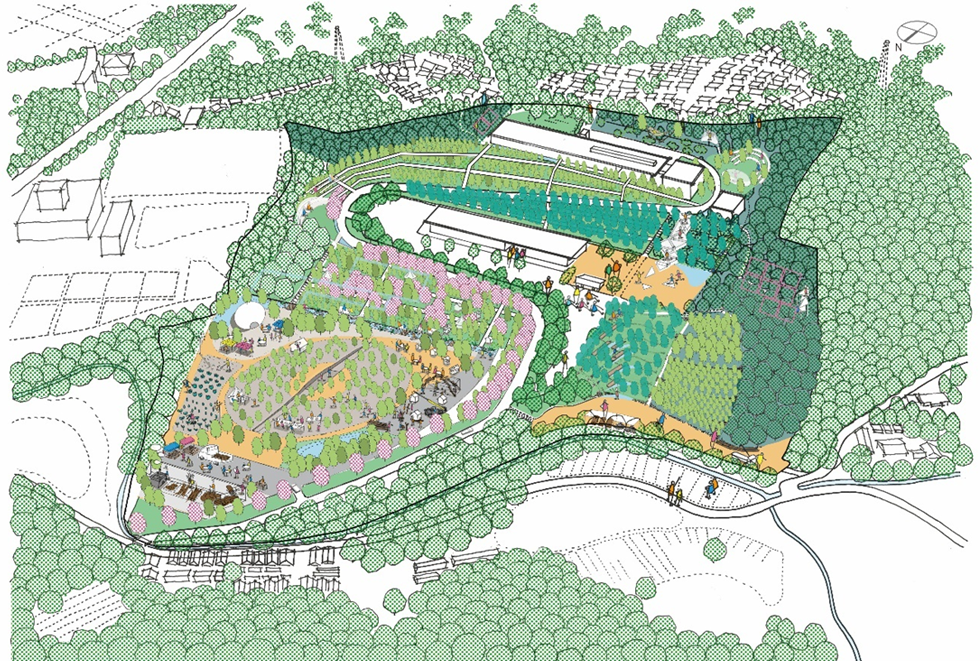
V. Biodiversity initiatives in our projects
In order to promote optimal land use that takes advantage of the diverse functions of nature through our projects, we focus on biodiversity, consideration of local vegetation, land use history, creating ecosystem networks, and efforts from planning and design to postconstruction maintenance and operation with all involved participants. These activities are being tracked and recorded.
Suntory Natural Water Kita Alps Shinano Forest Water Plant
We are creating a place where visitors can experience our activities to conserve and nurture watershed forests. We have teamed up with clients and specialists to understand the current vegetation and topography, using drone surveys and physical visits to determine the optimal parkway location where visitors can tour the site. Boulders once carried by the river were placed along the parkway and in the waterscape. The plan also utilizes the region’s natural landscape by harvesting and replanting seedlings from forests affected by land development, and by introducing local seeds and seedlings into the new planting area.
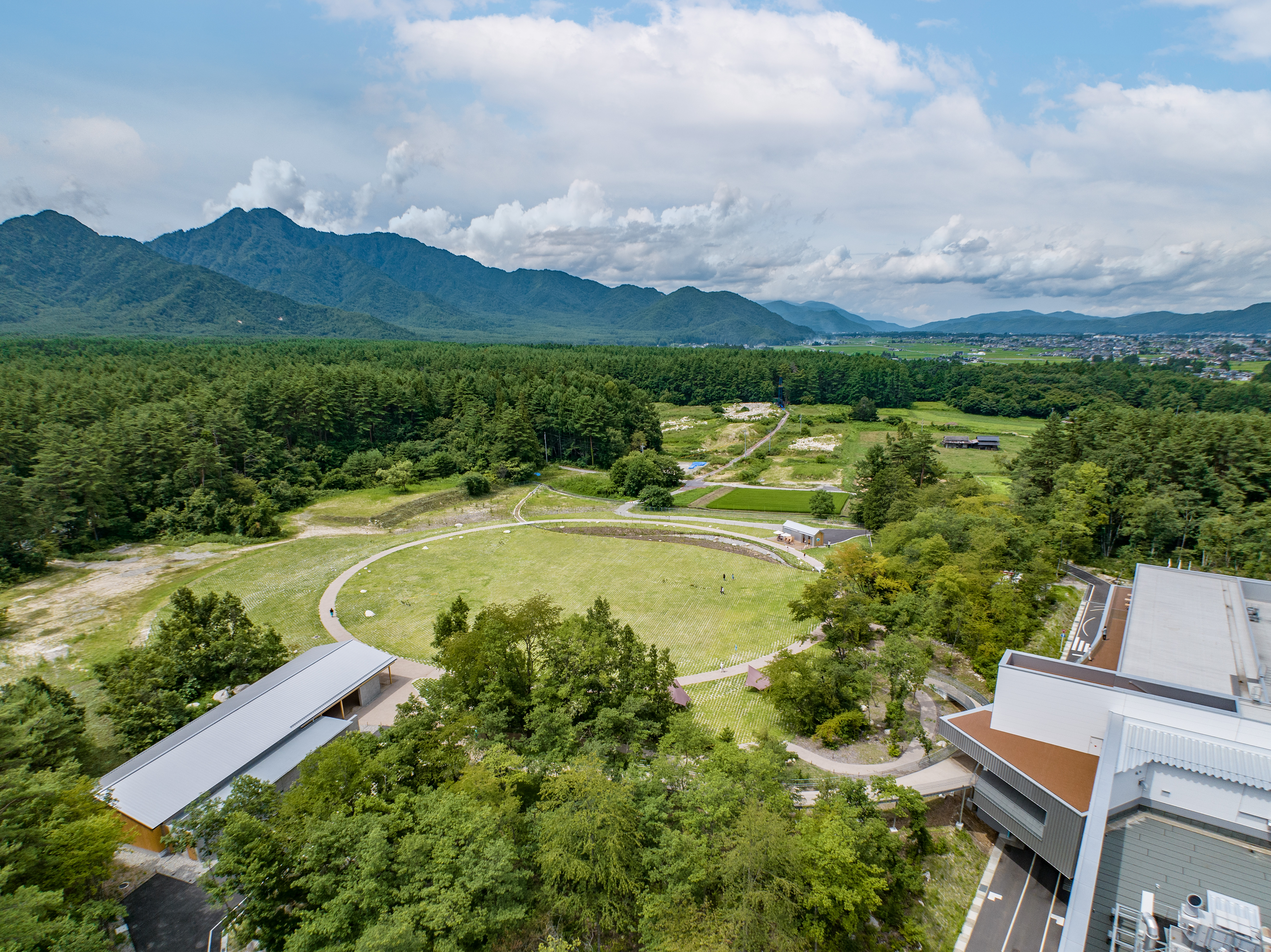
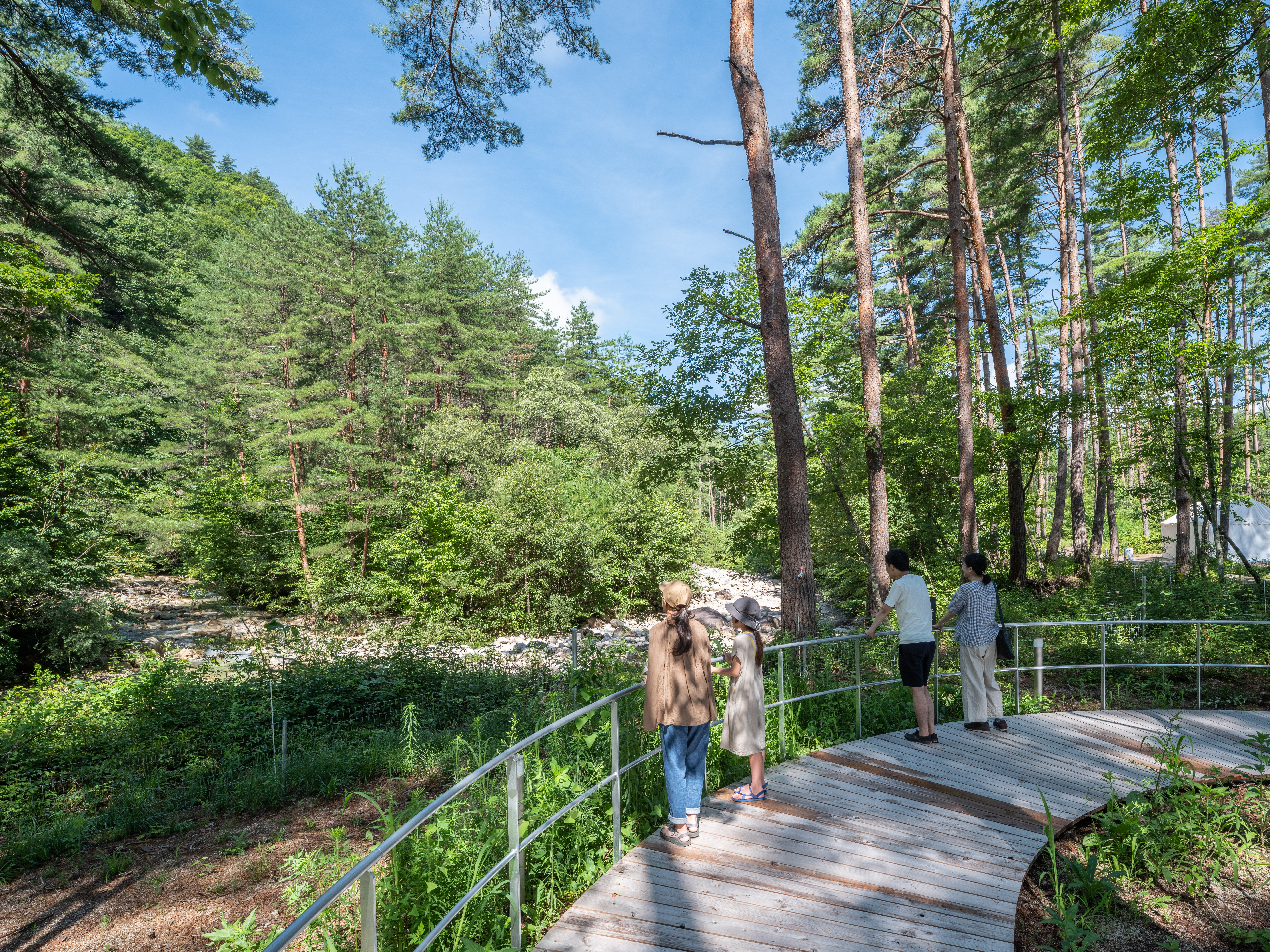
WITH HARAJUKU
WITH HARAJUKU is a commercial complex that includes stores, a coworking hall, and a residential complex on a site that connects Harajuku Station and Takeshita-dori Avenue, and near Meiji Jingu Shrine, which is celebrating its 100th anniversary. The site has an eight-meter east-to-west elevation differential, and a new semioutdoor street space called the “Passage” in the building’s center that allows east-side Takeshita-dori Avenue passage. Along the Passage, a recreated Edo era green terraced hill called Genjiyama has been recast in the form of a staircase which overlooks Harajuku to the city. The exterior is clad in thick wood that echoes Meiji Shrine history and reveals an expression that has deepened over time.
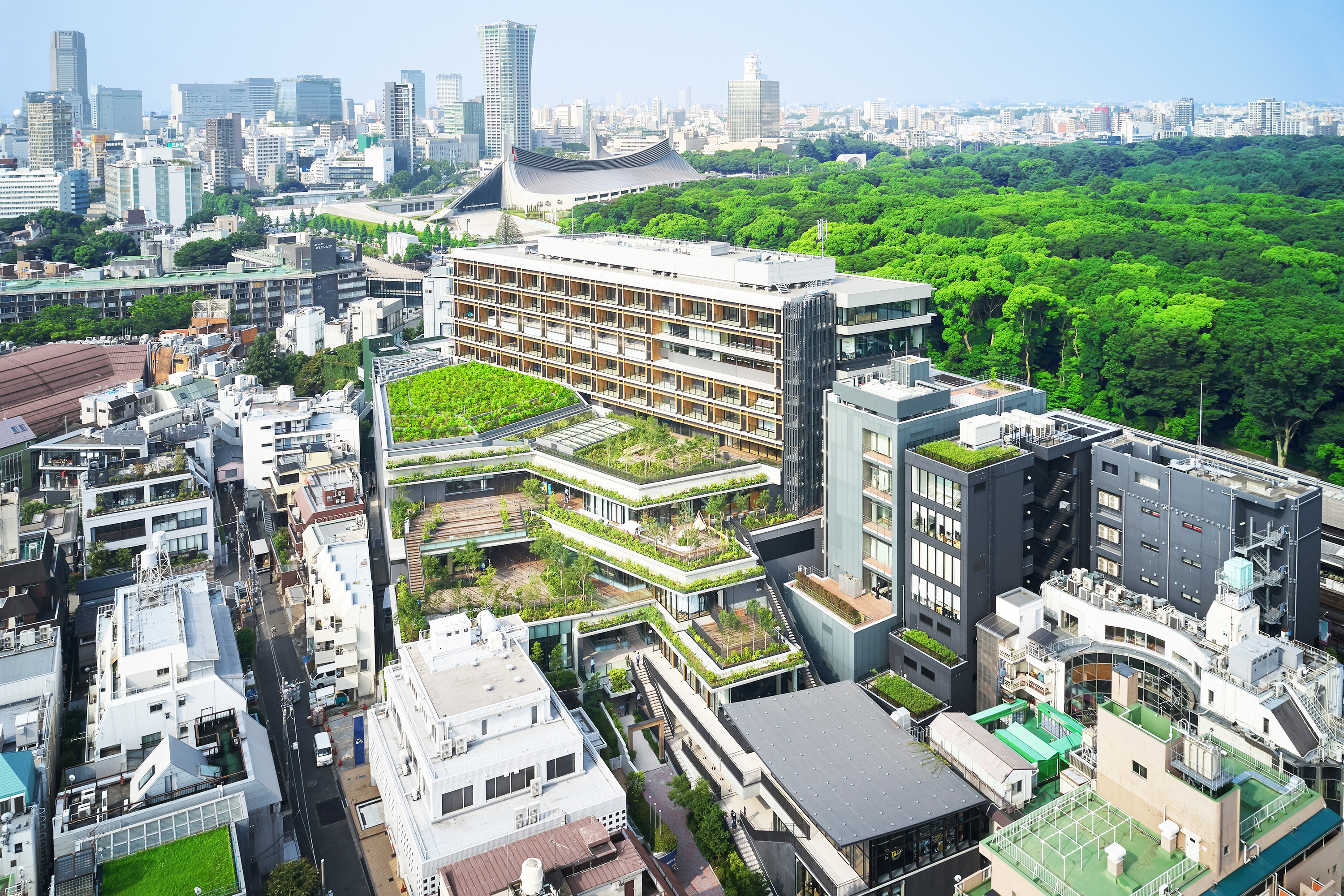
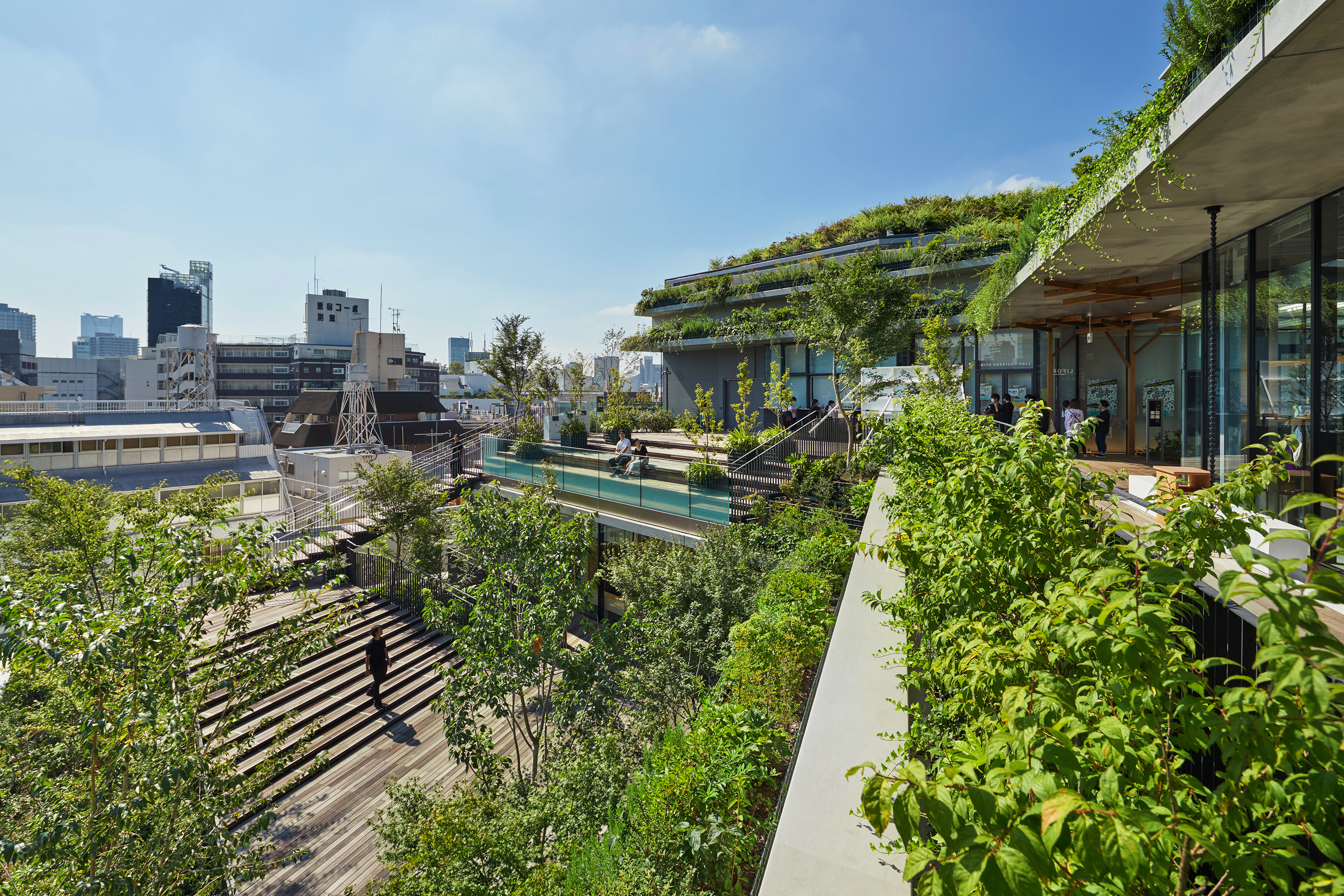
ACROS Fukuoka
ACROS Fukuoka was established in 1995 on the site of the former prefectural government office in Tenjin District in the heart of Fukuoka City. This public-private complex is based on the concept of a “center for international, cultural, and information exchange.” The building's most distinctive feature is the “step garden,” a staircase-like rooftop garden with an enjoyable view of Fukuoka City. The step garden, carefully nurtured over the 26 years since its completion through supplemental planting, has grown to yield a new ecosystem with an increasing number of tree species, including some that have grown naturally from seeds carried by wild birds. Called “Akurosu-yama” (ACROS Mountain) by local residents, it sports abundant greenery like a natural mountain. Together with the adjacent Tenjin Central Park, it is a space for relaxation. In addition, the step garden mitigates “heat island” effects, thereby contributing to global warming reduction.
